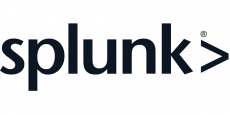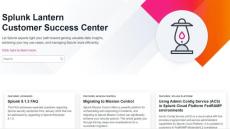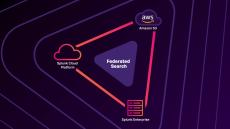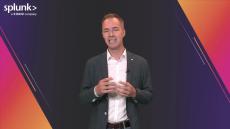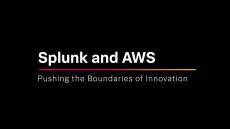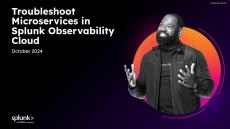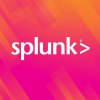|
By Blessing Onyegbula
To confirm cyberattack occurrences and build or enhance cyber-defense strategies, threat intelligence teams use a lot of information, including Indicators of Compromise (IoCs). These IoCs are actually forensic data that are critical in: The relevance of IoCs cannot be downplayed, but they're not all that’s needed in building an effective cybersecurity strategy. In this article, we’ll explore indicators of compromise, their types, and their relevance to threat intelligence teams.
|
By Jeremy Hicks
When you have a piece of data tucked into your logs or span tags, how do you dig for that bounty of insight today? Commonly this sort of data will be numeric, like a purchase total or number of units. Wouldn’t it be nice to easily turn that data into a metric timeseries? The Sum Connector in OpenTelemetry does just that, allowing you to create sums from attributes attached to logs, spans, span events, and even data points!
|
By Laiba Siddiqui
We all know that testing new ideas on physical IT infrastructure requires a massive upfront cost. That's why businesses adopt cloud infrastructure setups. These setups offer on-demand resources, which allow you to start new projects and pay for only what you use. This eliminates the need for expensive hardware and maintenance, enabling flexibility that organizations require.
|
By Guest
If you're new to working with data, you might have heard of databases and data warehouses. But do you know what sets them apart? Knowing the differences between data warehouses and databases can clear up a lot of confusion for many people, especially with the volume of data we have these days. In this blog post, I'll discuss the differences between these two types of data systems. I'll also provide some examples to help illustrate the points made.
|
By Jennifer Swallow
If you're a Splunk customer, chances are high that you use either Splunk Enterprise or Splunk Cloud Platform on a daily basis. With powerful dashboards, scalable indexes, and data streaming, these core products give you immense data analysis powers and actionable insights. And that's something everybody wants! But you aren't everybody. You're uniquely you - a specific customer working in a specific industry with specific use cases.
|
By Antoni Komorowski
At Splunk, we're constantly innovating to make our platform more accessible and powerful for users. Today, we're excited to dive into one of our key tools: the Universal Configuration Console (UCC) framework. This powerful framework is revolutionizing how you can create and manage Splunk add-ons, and we want to show you why it's becoming an essential part of the Splunk ecosystem.
|
By Bill Rowan
Splunk continues to partner with government agencies on their digital transformation journeys to help deliver their missions and provide faster and more intelligent services. We are committed to the success and support of the security requirements of our public sector customers, and I am thrilled to share the latest strategic investments Splunk is making to expand our FedRAMP program to include Splunk Observability Cloud for government customers.
|
By Patrick Lin
In 2024, simply having an observability practice is a given. In this era of observability, a high-functioning team will set leaders apart from their peers. Leading observability practitioners don’t fix issues by putting hundreds of people into a virtual room, or frantically messaging in a temporary Slack channel to find root causes. Because leaders embed observability into their development practices early, a feature launch is a quiet non-event.
|
By Kayly Lange
As IT costs continue to balloon, many organizations are caught between the desire to scale and the pressure to cut costs. It’s an incredibly delicate balancing act leaders struggle to maintain: while 66% of companies in one study said they plan to increase their IT budgets, 84% were worried about a recession, while 63% struggled to secure IT talent. By spending on infrastructure, organizations are forced to spend less on innovation. But what if there is a way to have both?
|
By Stephen Watts
Digital experience monitoring (DEM) is the evolution of application performance monitoring (APM) and end user experience monitoring (EUEM) into a comprehensive tool that analyzes the efficacy of an enterprise’s applications and services. Essentially, DEM combines these functions and goes beyond both — all to ensure consistency across the customer experience.
|
By Splunk
Looking to harness the power of your data stored in Amazon S3 without duplicating it? Discover how Splunk Federated Search for Amazon S3 empowers you to securely access, filter, and analyze your data in just a few easy steps.
|
By Splunk
With the combined power of the network at Cisco with market-leading security and observability solutions from Splunk - our customers are now able to deliver secure, seamless customer and employee experiences. Arjan Staal, Strategic Account Manager at Splunk shares all the details.
|
By Splunk
Listen to Patrick Peeters, Observability Advisor at Splunk to learn more about how Splunk's modern observability tools are rapidly evolving to meet organisations' demands for scalability, ease of use, real-time insights, and AI to improve their digital resilience.
|
By Splunk
Build a more agile, secure, and resilient tomorrow with Splunk on Amazon Web Services (AWS). We’re pushing the boundaries of innovation to empower your business in its security, observability, and cloud transformation journey.
|
By Splunk
In 2024, simply having an observability practice is a given. Organisations with leading programs create incredible digital experiences, innovate faster and drive resilience. Our latest research reveals that observability leaders deliver more productivity and value than their peers — achieving a 2.67x annual return on their observability solutions.
|
By Splunk
In this video I'll provide a summary of KubeCon's Observability Day session highlights.
|
By Splunk
Join Splunk Observability expert Kirk O'Quinn and Monster CICD Lead Graham Bucknell for a conversation on OpenTelemetry (OTel), a powerful open-source project that is transforming how we monitor and trace applications. In this informative session, we will delve into the world of Otel, exploring its history, its roadmap and we will discuss lessons, and success/failures of “Companies” journey to OpenTelemetry.
|
By Splunk
Learn how the asset inventory provided by Splunk Asset and Risk Intelligence delivers a much-needed source of truth, bringing together different sources, helping to discover previously unknown assets, and delivering context and enrichment for key cybersecurity activities.
Troubleshooting Microservices with Splunk Observability Cloud and the AI Assistant for Observability
|
By Splunk
In this video, I’m going show you how to troubleshoot microservices in Splunk Observability Cloud using features like APM’s Service Map and Tag Spotlight to identify what’s causing our microservice to produce high error rates. We’ll then review Related Logs in Log Observer to determine why the error in our service is occurring.
|
By Splunk
In this video I will introduce you to the concept of Observability as Code and what that looks like in Splunk Observability Cloud. I’ll first discuss the issues you might encounter managing infrastructure manually, and then define Infrastructure as Code so that you have a better understanding of the motivation behind Observability as Code. We’ll briefly introduce Terraform and then I’ll discuss the benefits of implementing Observability as Code using Splunk’s Terraform provider in Splunk Observability Cloud.
|
By Splunk
Gaining insights from your data requires more than collecting and analyzing metrics and logs. With the acceleration of customer and business demands, site reliability engineers and IT Ops analysts now require operational visibility into their entire architecture, something that traditional APM tools, dev logging tools, and SRE tools aren't equipped to provide. Observability enables you to inspect and understand your IT stack; but what is it, and how does it differ from IT monitoring?
|
By Splunk
The hype around artificial intelligence (AI) and machine learning (ML) has exploded, sometimes overshadowing the real uses and innovations happening everyday at organizations across the globe. The reality is that applying AI and ML to data-dependent challenges presents opportunity for better security, faster innovation and overall improved efficiency.
|
By Splunk
Imagine a world where incident alerts arrive 30 minutes before problems even begin - you'd actually have the power to prevent outages and deliver a truly seamless experience to your customers. Sound impossible? Think again - the right AIOps (Artificial Intelligence for IT Operations) solution can help you maintain uptime, reduce manual incident-management tasks and increase productivity.
|
By Splunk
At Splunk, we make it easy for our customers to turn mountains of machine data in their Amazon Web Services (AWS) and hybrid environments into valuable business, operational and security insights that improve their businesses.
|
By Splunk
Most IT organizations have adopted event management as a central practice to help find and fix what's broken, but today's tools focus on managing the volume of events-they do not deliver service context. Without context, you are ill-equipped to focus on the right problem at the right time. What you need is something different-something that makes IT events less eventful and more insightful-and now, you can finally do it!
|
By Splunk
From protecting customer experience to preserving lines of revenue, IT operations teams are faced with increasingly complex responsibilities while being required to prevent outages that could harm the organization. Splunk IT Service Intelligence (ITSI) utilizes AI powered by machine learning to deliver a predictive IT and ensure optimal application performance and quality.
|
By Splunk
The financial services industry has unique challenges that often prevent it from achieving its strategic goals. The keys to solving these issues are hidden in machine data-the largest category of big data-which is both untapped and full of potential.
|
By Splunk
Let's face it - the struggle to monitor basic server metrics in modern hybrid infrastructures is real. But deploying and maintaining monitoring tools doesn't have to be a major headache. Splunk Insights for Infrastructure can help your team index both Linux and AWS data, enabling them to quickly identify and remediate the root cause of problems.
|
By Splunk
Splunk is probably the single most powerful tool for searching and exploring data you will ever encounter. Exploring Splunk provides an introduction to Splunk -- a basic understanding of Splunk's most important parts, combined with solutions to real-world problems.
|
By Splunk
Digital transformation has led to complex environments that continuously generate new data. As a result, organizations are left unsure about how to best use their data to foster growth and edge out the competition. It's not enough to just have mountains of data, it needs to be analyzed and made sense of in a way that best suits the business.
- December 2024 (8)
- November 2024 (6)
- October 2024 (8)
- September 2024 (17)
- August 2024 (14)
- July 2024 (11)
- June 2024 (11)
- May 2024 (15)
- April 2024 (12)
- March 2024 (15)
- February 2024 (8)
- January 2024 (20)
- December 2023 (17)
- November 2023 (31)
- October 2023 (30)
- September 2023 (18)
- August 2023 (29)
- July 2023 (21)
- June 2023 (16)
- May 2023 (21)
- April 2023 (20)
- March 2023 (27)
- February 2023 (12)
- January 2023 (11)
- December 2022 (7)
- November 2022 (15)
- October 2022 (13)
- September 2022 (20)
- August 2022 (17)
- July 2022 (28)
- June 2022 (25)
- May 2022 (10)
- April 2022 (19)
- March 2022 (16)
- February 2022 (10)
- January 2022 (17)
- December 2021 (21)
- November 2021 (23)
- October 2021 (21)
- September 2021 (16)
- August 2021 (19)
- July 2021 (45)
- June 2021 (36)
- May 2021 (22)
- April 2021 (38)
- March 2021 (32)
- February 2021 (29)
- January 2021 (20)
- December 2020 (27)
- November 2020 (21)
- October 2020 (30)
- September 2020 (22)
- August 2020 (24)
- July 2020 (30)
- June 2020 (20)
- May 2020 (34)
- April 2020 (40)
- March 2020 (21)
- February 2020 (15)
- January 2020 (23)
- December 2019 (2)
- November 2019 (1)
- October 2019 (8)
- September 2019 (3)
- August 2019 (3)
- June 2019 (2)
- May 2019 (4)
- April 2019 (1)
- March 2019 (2)
- February 2019 (1)
- January 2019 (1)
- November 2018 (2)
- October 2018 (14)
- September 2018 (14)
- August 2018 (5)
- July 2018 (4)
- June 2018 (2)
- May 2018 (4)
- April 2018 (2)
- March 2018 (1)
- February 2018 (1)
- January 2018 (1)
Splunk produces software for searching, monitoring, and analyzing machine-generated big data, via a Web-style interface.
Splunk turns machine data into answers. Regardless of your organization’s size and industry, Splunk can give you the answers you need to solve your toughest IT, security and business challenges—with the option to deploy on-premises, in the cloud or via a hybrid approach.
Work the Way Your Data Works:
- Real-Time: Splunk gives you the real-time answers you need to meet customer expectations and business goals.
- Machine Data: Use Splunk to connect your machine data and gain insights into opportunities and risks for your business.
- Scale: Splunk scales to meet modern data needs — embrace the complexity, get the answers.
- AI and Machine Learning: Leverage artificial intelligence (AI) powered by machine learning for actionable and predictive insights.
Any Question. Any Data. One Splunk.


